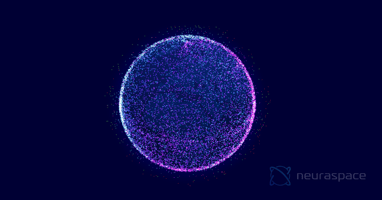2025 IAC Annual Conference Recap
![]()

Last month, two Neuraspace team members attended the International Astronautical Congress in Sydney, a global meeting of space agencies, industry leaders, and academics from around 100 countries, with over 450 organisations showcasing their work.
At the conference, our team presented three new technical papers addressing key challenges in space operations: improved tracking for rideshare missions, explainable ML for space object behavior, and LLMs for decision support. Below, we highlight each paper, outlining the main ideas, technical breakthroughs, and potential impact on space safety and operations
Paper 1: Lessons Learned from Tracking and Identification for Rideshare LEOP Support
Authors: Robert Arthur, Gianmario Merisio, Miguel Santos, André Ribeiro, Chiara Manfletti
Challenge
The rise of small satellites and rideshare missions has introduced new challenges for the SSA community. Some launchers deploy over 100 satellites at once, making cataloguing these objects difficult and time-consuming. This creates risks for operators needing to establish reliable communications during the Launch and Early Operations Phase (LEOP). Satellites may be lost if signals are not acquired quickly, and even when tracked, identifying them accurately is a major challenge, with some payloads never entering the Space-Track catalogue.
Innovation
Neuraspace captured practical lessons and best practices from supporting multiple rideshare LEOPs, including early signal acquisition, careful GNSS data management, calibrated orbit determination, and coordinated ground-based tracking.
Key Advancements
- Analysis of rideshare numbers and payloads to highlight cataloguing challenges
- Recommendations for establishing communications and reducing early-orbit uncertainty
- Strategies for identifying satellites in multi-payload rideshare deployments
- Lessons from hands-on support, including GNSS data use, optical tracking, and orbit determination
Practical Impact
By applying these lessons, operators can rapidly acquire signals, maintain custody of satellites, and perform effective orbit determination during LEOP, improving safety, reliability, and mission success for rideshare launches.
-----
Paper 2: Explainable Machine Learning for Space Object Attitude Classification
Authors: Marta Guimarães, Maria Almeida, Miguel Santos, Robert Arthur, Chiara Manfletti
Challenge
Attitude estimation for resident space objects is challenging, often relying on expert-driven analysis or deep learning methods that require dense observational data. Sparse optical data and operational constraints make it difficult to classify tumbling vs. non-tumbling objects, limiting real-world applicability.
Innovation
We introduce a lightweight, interpretable ML framework combining domain-expert feature engineering and decision tree models to classify tumbling vs. non-tumbling objects from sparse optical observations. Features capture motion, brightness, periodicity, and phase-angle behaviour, enabling transparent, computationally efficient, and operationally viable attitude estimation.
Key Advancements
- Feature engineering inspired by expert intuition, capturing motion, brightness, periodicity, and illumination.
- Interpretable decision-tree model with SHAP explainability.
- Robust performance in sparse data, competitive F1-score.
- Ablation study showing all feature groups contribute to classification.
- Operational feasibility: low computational cost, real-time adaptability.
Practical Impact
Enables consistent, explainable, and resource-efficient attitude classification from sparse data. Supports real-time decision-making, improves situational awareness, and aids Space Traffic Management in LEO.
-----
Paper 3: Language Modeling and Retrieval-Augmented Generation Integration in Space Operation Decision Support Tools
Authors: Ruben Belo, Cláudia Soares, Marta Guimarães
Challenge
The rapid growth of the space industry has created massive, ever-changing volumes of technical documents, guidelines, and publications. Operators must navigate regulations, safety protocols, and mission-critical data. Manual processing is slow and error-prone, making efficient knowledge retrieval essential for decision-making, operational safety, and space traffic and debris management.
Innovation
We propose a conversational agent powered by a Retrieval-Augmented Generation (RAG) pipeline, combining LLMs with advanced information retrieval. The system generates contextually relevant responses from official reports, literature, and operational directives. Retrieval strategies, embeddings, and RAG configurations are optimized for accuracy, reliability, and robustness, with safety and ethical safeguards integrated.
Key Advancements
- Domain-specific synthetic dataset: a large corpus of questions across Direct Q&A, Abstract Q&A, Fact Checking, Summarization, and Analysis.
- Evaluation of retrievers (BM25, Qwen2-1.5B) and reranking for relevant context.
- Robust to moderate retrieval errors and adversarial passages.
- LLM conditioning for faithful, context-aware, safe responses.
- Deployment-ready for secure environments.
Practical Impact
The system enables fast, reliable, context-aware information retrieval, supporting decision-making, reducing operator workload, and improving situational awareness. It contributes to safer, more efficient, and sustainable space operations, addressing space traffic and debris challenges.



-1.png?height=200&name=Blog_LinkedIn_Neura%20(10)-1.png)